In the transportation and logistics industry, effective truck dispatching is crucial for ensuring smooth operations, saving costs, and enhancing customer satisfaction. At Xe Tải Mỹ Đình, as experts in the truck industry, we understand the unique challenges and requirements of truck dispatching. This article provides a detailed guide on how to dispatch trucks effectively, helping your business optimize operations and achieve peak performance.
Why is Truck Dispatching Important?
Truck dispatching is more than just planning routes. It’s a complex process involving various factors such as selecting optimal routes, assigning suitable vehicles and drivers, tracking journeys, and handling unforeseen situations. An effective truck dispatching process offers several practical benefits:
- Fuel Cost Savings: Choosing the shortest routes and avoiding congested roads significantly reduces fuel consumption.
- Reduced Delivery Times: Efficient dispatching ensures timely deliveries, enhancing customer trust and satisfaction.
- Optimized Vehicle Utilization: Assigning the right vehicles to specific cargo types and routes maximizes fleet capacity.
- Improved Driver Efficiency: Clear route planning and comprehensive information enable drivers to work efficiently and reduce stress.
- Easier Fleet Management: Using truck dispatching software simplifies tracking vehicle locations, delivery statuses, and driver performance.
- Ensured Road Safety: Planning routes to avoid restricted areas and poor roads ensures the safety of drivers and cargo.
Conversely, inefficient truck dispatching can lead to serious consequences such as delivery delays, increased operating costs, reduced profits, and even damage to your business’s reputation.
Steps to Effective Truck Dispatching
To build an effective truck dispatching process, you can follow these 8 detailed steps:
1. Build a Detailed Vehicle and Driver Database
The first step in truck dispatching is creating a detailed database of your vehicle fleet. Use fleet management software or truck dispatching tools to create profiles for each vehicle, including crucial information such as:
- Vehicle Type: Box truck, dump truck, tractor-trailer, specialized vehicle, etc.
- Technical Specifications: Dimensions (height, width, length), payload capacity, unladen weight, number of axles, etc.
- Transport Capabilities: Suitable cargo types, hazardous materials transport capability (if any).
- Vehicle Condition: Maintenance history, current operational status.
Having a detailed profile for each vehicle helps you easily select the right vehicle for each shipment, ensuring compliance with weight and size regulations.
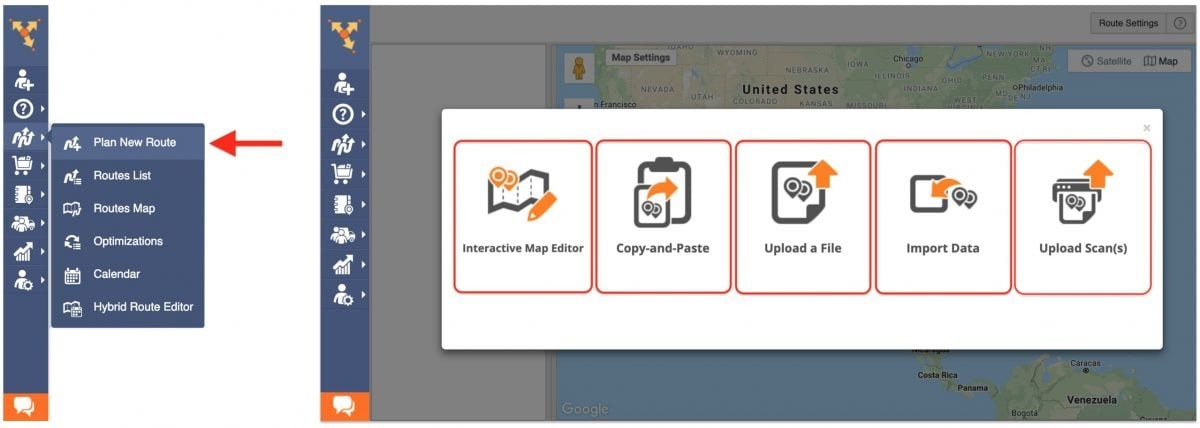 Delivery address database uploaded to truck dispatch software for commercial fleet
Delivery address database uploaded to truck dispatch software for commercial fleet
2. Input Destination and Schedule Data
After building the vehicle database, the next step is to input data about destinations and delivery schedules. This information includes:
- Delivery/Pickup Addresses: Detailed addresses, contact phone numbers, special requirements (delivery/pickup times, gate access, etc.).
- Cargo Type: Volume, dimensions, cargo characteristics (fragile, perishable, hazardous, etc.).
- Estimated Delivery Time: Customer-requested time or optimal delivery time.
- Number of Stops: Determine the number of stops per route to allocate appropriate vehicles and drivers.
Truck dispatching software allows you to import data in bulk from Excel or CSV files, saving time and minimizing errors.
3. Choose the Right Optimization Method
With vehicle and schedule data, you need to choose the appropriate route optimization method. Common optimization methods include:
- Time Optimization: Finding the shortest route in terms of travel time, suitable for urgent deliveries.
- Distance Optimization: Finding the shortest route in terms of mileage, helping save fuel.
- Cost Optimization: Considering time, distance, tolls, and other costs to find the most cost-effective route.
- Multi-Factor Optimization: Combining multiple factors such as time, distance, vehicle type, and driver skills to create the most optimal route for each specific case.
Choosing the right optimization method depends on your business goals and operational characteristics.
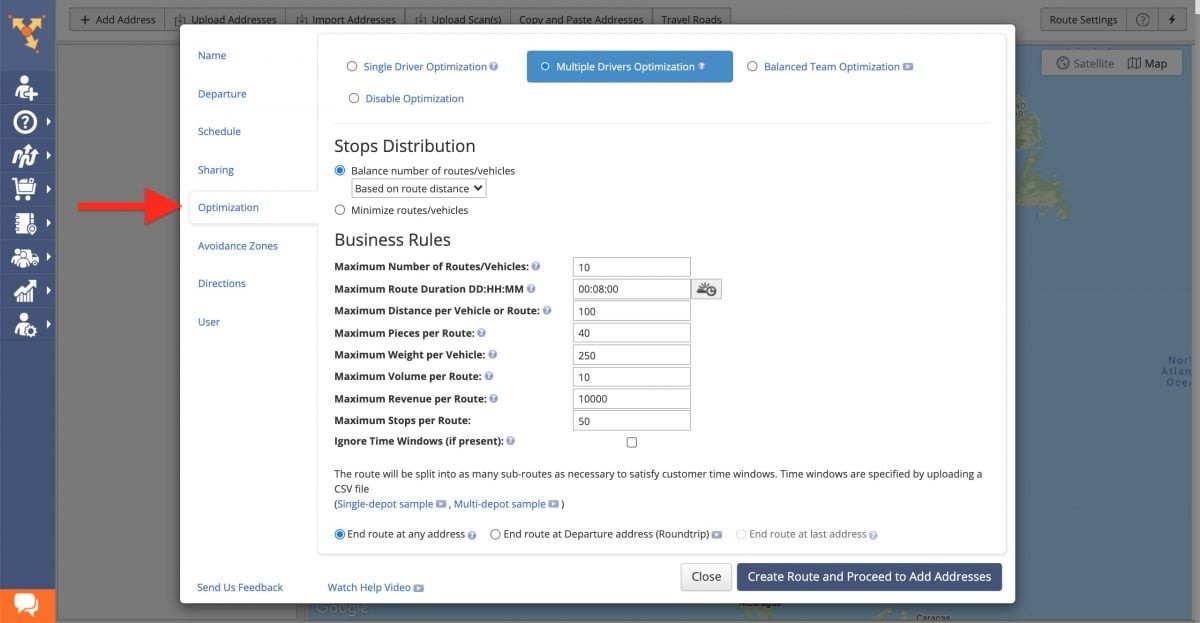 Route optimization constraints in specialized truck dispatch software for commercial transport
Route optimization constraints in specialized truck dispatch software for commercial transport
4. Define Route End Points
A crucial factor in truck dispatching is defining the endpoint of each route. You can choose different endpoints:
- Return to Origin: The vehicle returns to the starting point after completing the route.
- Route’s Last Stop: The vehicle ends its journey at the final delivery point.
- Intermediate Point or Convenient Location: The vehicle ends its journey at an intermediate point or a location convenient for continuing other shipments.
The choice of route endpoint affects operating time and costs. Truck dispatching software can help you calculate and choose the most optimal endpoint.
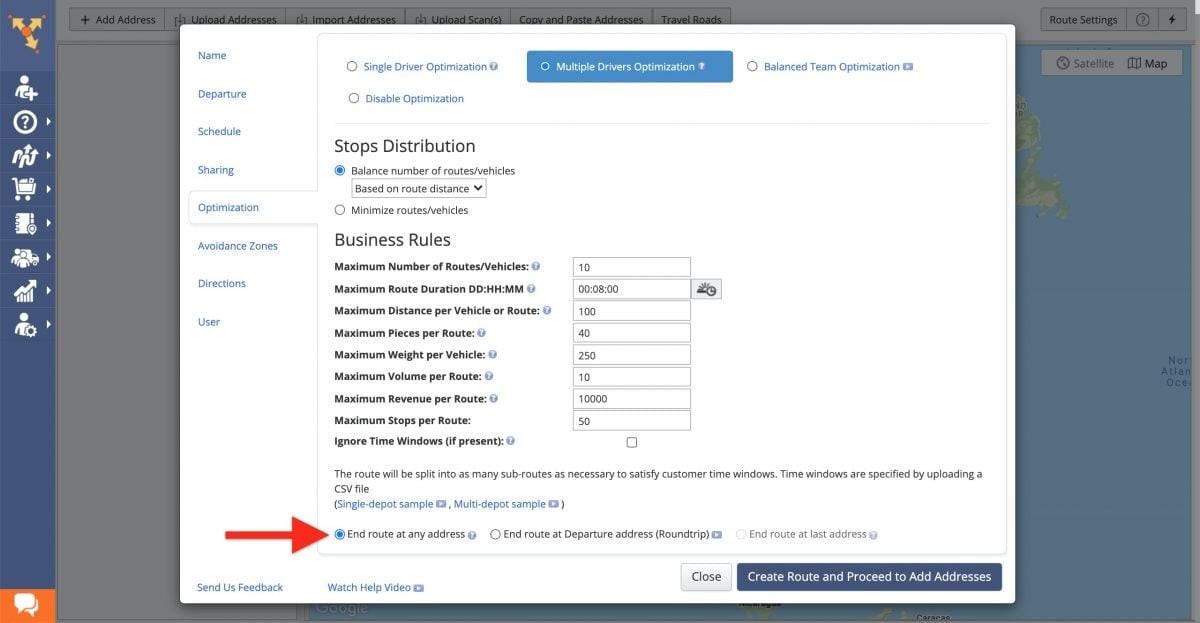 Choosing end points for multi-stop routes on truck dispatch software for commercial and CMV fleets
Choosing end points for multi-stop routes on truck dispatch software for commercial and CMV fleets
5. Set Business Conditions and Rules
To ensure the truck dispatching process aligns with your specific business, you need to set specific business conditions and rules, such as:
- Driver Working Hours: Comply with regulations on continuous driving time and driver rest periods.
- Delivery Priorities: Identify priority orders and ensure timely delivery.
- Preferred Vehicle Type for Route: Prioritize using vehicle types suitable for route characteristics and cargo.
- Driver Skills: Assign drivers with experience and skills appropriate for each vehicle type and route.
- Peak Hours and Restricted Zones: Avoid restricted routes and timeframes, especially in urban areas.
Setting these rules helps truck dispatching software create practical and feasible routes that meet your business needs.
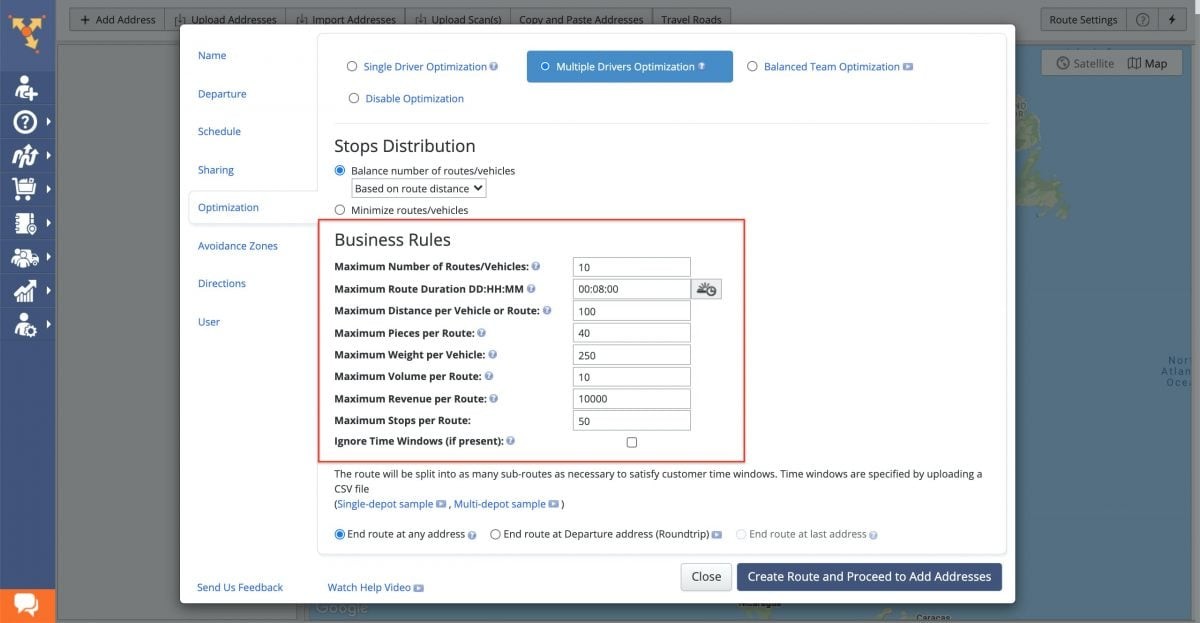 Route optimization for multiple drivers on truck dispatch software for commercial routing
Route optimization for multiple drivers on truck dispatch software for commercial routing
6. Optimize Transportation Routes
After inputting all data and setting conditions, the next step is to use truck dispatching software to optimize routes. The software will automatically analyze and create the most optimal routes based on the established factors. The optimization process is usually very quick, taking only seconds or minutes.
Optimizing routes with software not only saves time but also ensures higher accuracy and efficiency compared to manual planning. The software considers factors that are difficult for humans to fully process, such as bridge weight limits, truck-restricted roads, and peak hours.
7. Dispatch Routes to Drivers
Once you have the optimal routes, you need to dispatch these routes to drivers. Truck dispatching software often integrates features to send route information directly to drivers’ mobile applications.
Mobile applications for drivers provide detailed route information, lists of stops, navigation maps, and other support tools such as:
- Voice Navigation: Guiding drivers turn-by-turn, helping to drive safely and stay focused.
- Delivery Status Updates: Drivers can update delivery statuses (delivered, in transit, encountering issues, etc.) directly on the app.
- Electronic Signature Capture: Capture customer signatures for delivery confirmation on mobile devices.
- Direct Communication with Dispatchers: Easily contact and exchange information with dispatchers when needed.
Dispatching routes directly to drivers helps minimize errors and enhances communication and coordination between dispatchers and drivers.
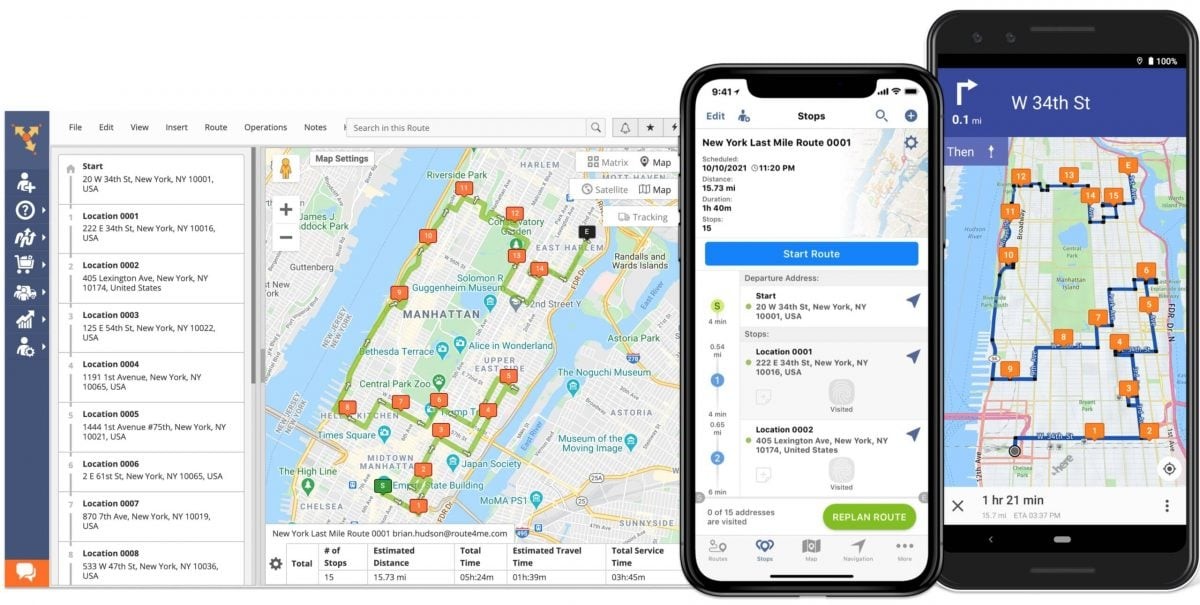 Dispatch truck routes to truckers on truck routing software for trucking
Dispatch truck routes to truckers on truck routing software for trucking
8. Track and Manage Journeys
The final and crucial step in truck dispatching is tracking and managing vehicle journeys. Truck dispatching software typically integrates GPS, allowing you to track vehicle locations in real-time on a map.
Journey tracking helps you:
- Monitor Vehicle Locations: Know the exact location of each vehicle on the route.
- Control Delivery Times: Track delivery progress and detect delays early.
- Respond Promptly to Incidents: Quickly detect and handle incidents on the road (breakdowns, accidents, etc.).
- Evaluate Driver Performance: Track travel time, stop time, and other parameters to assess driver performance.
- Provide Customer Information: Provide updated information about vehicle location and estimated delivery times to customers.
Some software also offers journey history review features, helping you analyze and improve dispatching processes in the future.
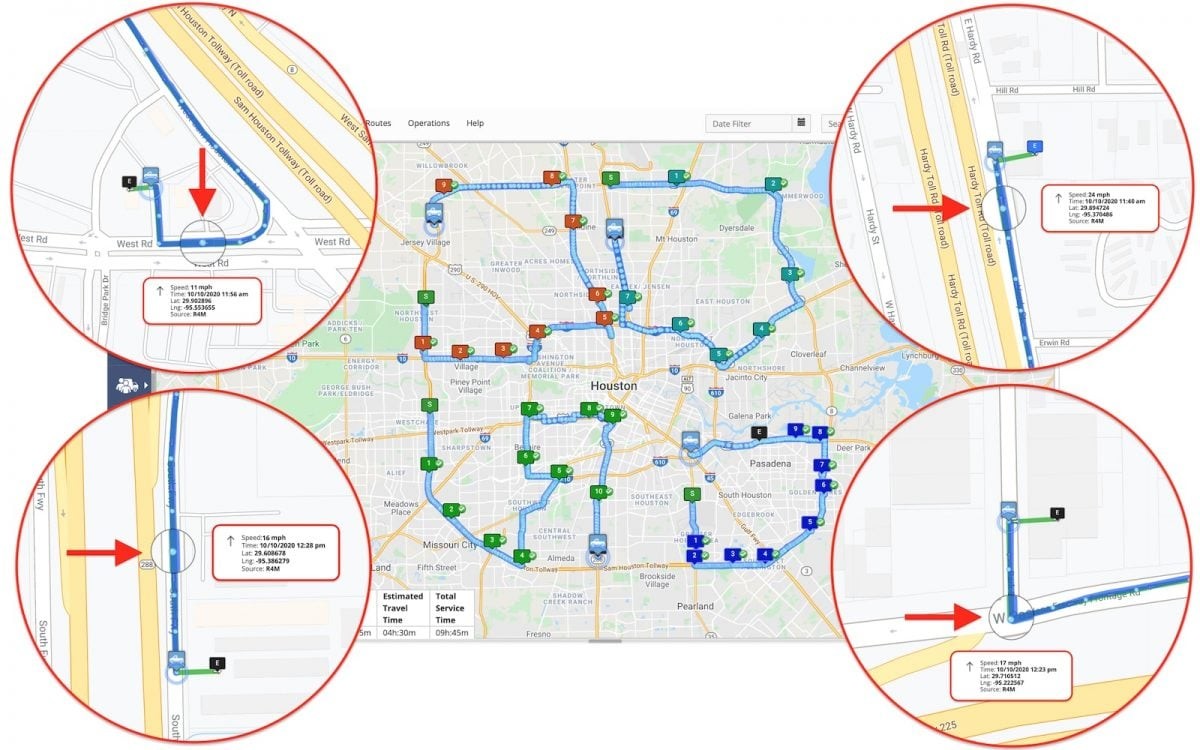 Tracking trucks and CMV vehicles on truck routes using truck routing software
Tracking trucks and CMV vehicles on truck routes using truck routing software
Benefits of Professional Truck Dispatching
Implementing a professional truck dispatching process, especially using truck dispatching software, offers significant benefits for transportation businesses:
- Increased Operational Efficiency: Optimize routes, reduce operating time and costs.
- Improved Service Quality: Ensure on-time deliveries, increase customer satisfaction.
- Reduced Costs: Save fuel, reduce vehicle wear and tear, lower management costs.
- Enhanced Competitiveness: Improve efficiency, reduce costs, and provide better service, helping businesses compete more effectively in the market.
- Easy Scalability: Effective dispatching processes help businesses easily manage larger fleets and expand operations.
Conclusion
Effective truck dispatching is a key factor for success in the transportation industry. By applying the steps outlined above and using supporting tools like truck dispatching software, your business can optimize operations, reduce costs, improve service quality, and achieve peak performance.
At Xe Tải Mỹ Đình, we are always ready to share our expertise and provide optimal truck dispatching solutions for your business. Contact us for the best advice and support!

